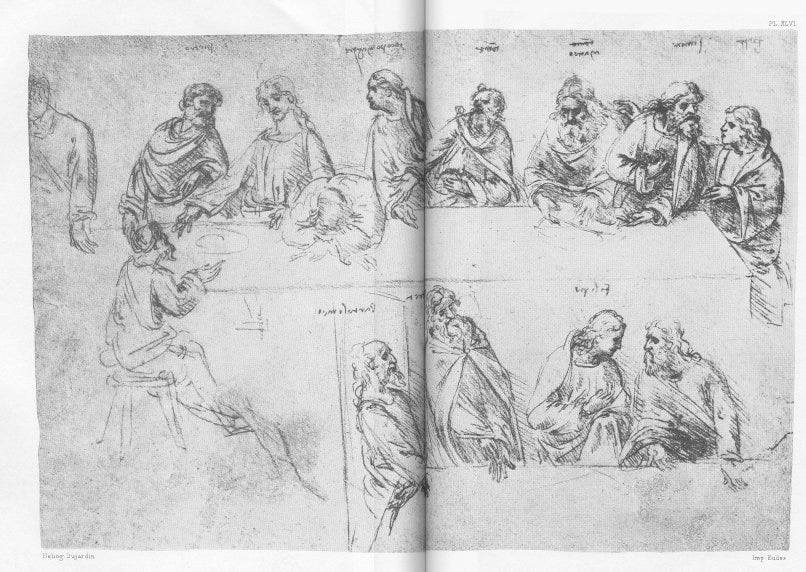Can You Really Learn the Humanities in 52 Weeks?
We're now halfway through my 12 month immersive course—so let's push ahead!
I made a simple promise—but almost impossible to keep.
I promised to offer a roadmap for learning arts and culture in just one year. And I would make it manageable—without imposing extreme demands.
Is that even conceivable? I hoped so. In any event, I was determined to find out.
Here are the ground rules.
There will be no more than 250 pages of reading per week (approximately)—we want this to be a doable project, not some daunting Mt. Everest.
The whole program can be completed in one year. (But you can stretch it out over longer periods, if you prefer.)
I also recommend musical listening and visual art for each week.
Our approach is roughly chronological, but not strictly so. I have deviated from strict timelines to pace the reader’s experience, and sometimes to create useful contrasts.
We will cover the entire world—or at least enough of it for you to feel some mastery over human culture in its depth and breadth.
You can do this anywhere and on your own—there are no classroom lectures, no tests, no homework.
But you may want to join with others in a reading group (feel free to use the comments section to organize these), or tap into online resources, such as the Catherine Project.
So far, I’ve shared:
Now it’s time to push ahead into our plan for weeks 27-39. You will find it below.
Okay, this isn’t easy. If it were, everybody would possess this learning. But it isn’t impossible. And if you pull it off, it can be life-changing.
So plunge in. Even making some progress on this journey is worth the effort.
Happy learning!
If you want to support my work, please take out a premium subscription (for just $6 per month).
A 12-Month Immersive Course in the Humanities (Weeks 27-39)
WEEK 27
Shakespeare: A Midsummer Night’s Dream, Romeo and Juliet, The Tempest
We’re giving Shakespeare more attention than any other author in this 52-week reading list. We already tackled his three greatest tragedies in week 26, and now move on to more romantic fare.
I make no apologies for focusing so much on the Immortal Bard (what a fine nickname)—despite whatever convict-and-moral-philosopher Sam Bankman-Fried wants you to think.
I’ll offer a modest suggestion that Bankman-Fried could have stayed out of prison, if he had studied Macbeth and King Lear, and applied some of the learnings to his own situation.
Shakespeare deserves our attention for many reasons. In an age when there were no psychologists or textbooks on human development, he probed the subconscious and inner life with a profundity that still stands out today. The full scope of humanity, in all its best and worst postures, appears in his dramas, but never in the stereotypical ways that dominate Netflix storytelling today.
His characters are simultaneously real, and also larger than life. They are intensely plausible, but also mythic. They are in the moment, but also eternal archetypes. They speak for their times, and they speak for our times.
Yet Shakespeare did all this while entertaining a mass market audience—with less formal education than today’s average consumer of culture. He really was the Netflix of his day.
So we give the I.B. his due—because he gives us so much in return.
Musical listening: Leonard Bernstein: West Side Story (based on Shakespeare’s Romeo and Juliet); Felix Mendelssohn’s A Midsummer Night's Dream, composed when Mendelssohn was just 17, and described by George Grove as “the greatest marvel of early maturity that the world has ever seen in music.”
Art (find it online): The portraits of Thomas Gainsborough.
WEEK 28
Giorgio Vasari: Lives of Giotto, Botticelli, Leonardo da Vinci, Raphael, and Michelangelo
The Autobiography of Benvenuto Cellini, chapters 1-18
The Renaissance changed our notions of arts and culture, but also our sense of what a holistic, well-rounded life looks like. You can’t really understand this shift just by looking at paintings and sculptures—you also need to probe into the lives of the artists themselves.
Giorgio Vasari is our original source for most of what we know about these figures. So we are picking a few choice chapters from his Lives of the artists. But we also need to meet Benvenuto Cellini, who more than anyone lived up to the image of “Renaissance man.”
It won’t be boring. Cellini led a life suitable for a Hollywood adventure movie.
Musical listening: Josquin Desprez, Guillaume de Machaut





